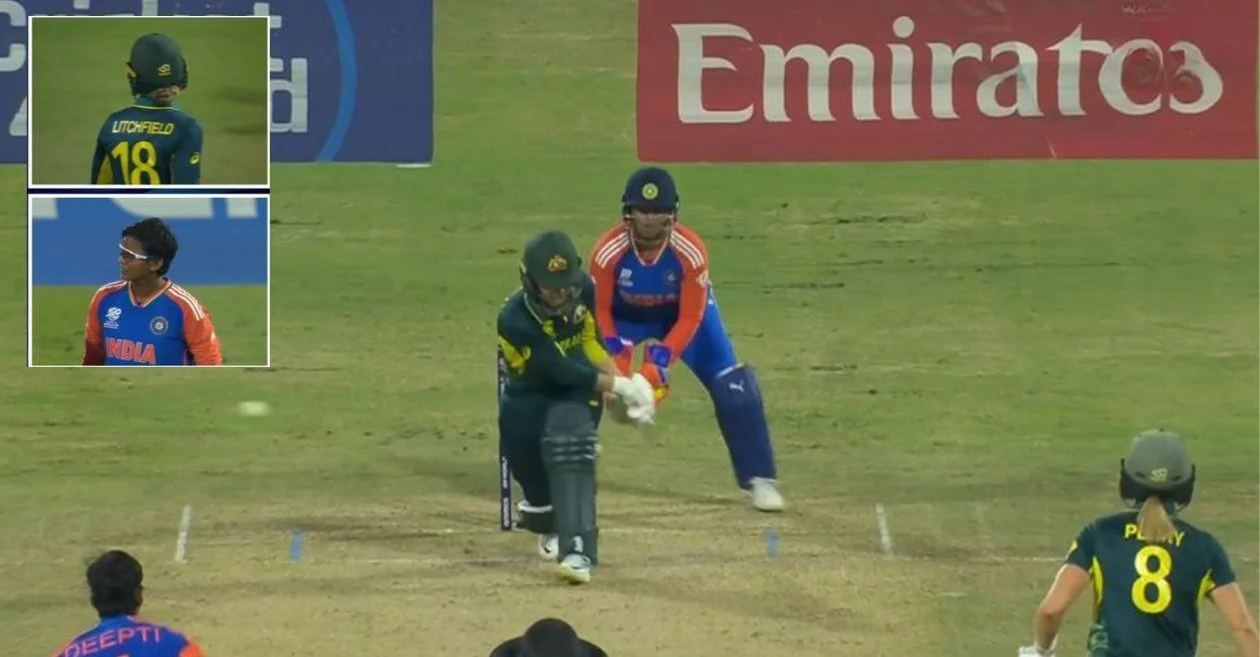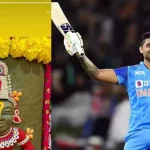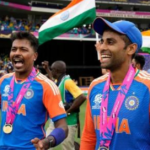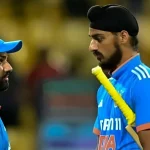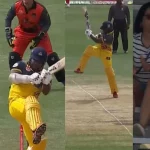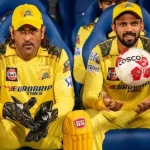In a gripping encounter during the 2024 ICC Women’s T20 World Cup, a controversial decision regarding Australia’s Phoebe Litchfield stirred significant debate among players, officials, and fans alike. The incident occurred in Sharjah on October 13, as India took on Australia in a highly anticipated match, and Litchfield’s survival after an LBW appeal caused confusion and frustration for the Indian team, highlighting the intricacies of cricket’s laws and technology.
The Incident: A Switch Hit Gone Wrong
The controversy unfolded in the 17th over of Australia’s innings, with Indian all-rounder Deepti Sharma bowling to Litchfield. After Litchfield struck the first ball for a boundary, Deepti aimed to deceive the batter by tossing up a delivery intended to spin away. As Litchfield attempted a reverse sweep, the ball missed her bat and struck her pads, leading to a loud and confident appeal from the Indian players. The on-field umpire, agreeing with the appeal, raised her finger and signaled out for LBW.
However, Litchfield immediately opted for a review, trusting the decision to the third umpire. The drama intensified when Hawk-Eye technology showed that the ball had pitched outside the leg stump, a factor that typically results in an automatic not-out decision for LBW.
Confusion and Debate Over Law Interpretation
What made this incident more contentious was the unique circumstances surrounding Litchfield’s attempted switch hit. When a batter switches their stance, the fielding side often expects a new interpretation of the off-side and leg-side for LBW decisions. In this case, Indian vice-captain Smriti Mandhana expressed her frustration, arguing that since Litchfield had attempted a switch to a right-handed stance for the reverse sweep, her stance should have been considered right-handed for the LBW ruling.
However, under the laws of cricket, Litchfield’s switch was not fully premeditated before Deepti released the ball. As a result, she was still considered a left-handed batter under the existing interpretation of the law, protecting her from the LBW decision as the ball pitched outside the leg stump.
MCC Laws Clarify the Outcome
The Marylebone Cricket Club (MCC), which oversees the rules of cricket, provides clarity on such scenarios under Law 36.1.2. The rule states that a batter can only be declared leg-before-wicket if the ball pitches between the wickets or on the off-side of the striker’s wicket. Additionally, Law 36.3 defines the off-side as determined by the batter’s stance at the moment the ball is released. Since Litchfield had not fully switched to her right-handed stance before Deepti delivered the ball, the laws still recognized her as a left-handed batter, and the leg-side rule came into play.
In this context, the third umpire’s decision to reverse the initial out ruling was technically correct, though it left many onlookers perplexed and questioning whether the law’s interpretation should change in cases where switch hits are involved.
Players’ Reactions and Frustration
For the Indian camp, particularly Deepti Sharma and Smriti Mandhana, the decision was hard to swallow. Mandhana, visibly frustrated after the review, engaged in a lengthy conversation with the on-field umpire, seeking clarification about the application of the laws and the role of Hawk-Eye in the decision. While the umpires were bound by the MCC’s rules, the incident prompted questions about whether the switch hit, a relatively modern innovation in cricket, should be treated differently in LBW scenarios.
Mandhana’s frustration was understandable given that the momentum of the match could have shifted in India’s favor had the original decision stood. Instead, Litchfield was allowed to continue batting, much to the displeasure of the Indian team and their fans.
The Broader Implications: Should the Law Change?
The incident raises an important question about the need for potential changes in cricket’s LBW laws, especially regarding switch hits. The switch hit has become a popular and innovative tactic in modern cricket, with batters like Litchfield using it to manipulate field settings and score boundaries. However, the complexity of how LBW is ruled in such cases can lead to confusion, as seen in this match.
Many argue that once a batter attempts a switch hit, their stance should immediately be considered the new stance for LBW decisions, regardless of when the ball is released. This would simplify the law and eliminate the ambiguity that currently surrounds it. On the other hand, others believe that the existing laws offer adequate protection for batters, and altering them might tip the balance too much in favor of the bowling side.
The Role of Technology: Hawk-Eye and Its Limitations
Another point of discussion following the incident was the role of Hawk-Eye technology. While it played a crucial role in determining that the ball pitched outside leg stump, its involvement also fueled the confusion. The technology accurately projected the ball’s trajectory, but the interpretation of the law regarding switch hits is what left players and fans divided.
Some have called for greater transparency in how technology is used and how decisions are communicated to both teams and audiences. In high-stakes games like the T20 World Cup, every decision matters, and ensuring that the laws are clearly understood and applied consistently is essential to maintaining fairness and integrity in the sport.
A Controversial Moment in an Intense Battle
The Phoebe Litchfield LBW controversy will likely be remembered as one of the key talking points from the 2024 Women’s T20 World Cup. While the MCC laws ultimately protected Litchfield from being given out, the incident highlighted the complexities of modern cricket and the challenges of applying traditional rules to evolving batting techniques.
As the tournament progresses, it remains to be seen whether the debate sparked by this incident will lead to any changes in the future interpretation of LBW laws, especially in relation to switch hits. For now, though, India must regroup and focus on their remaining matches, while Australia, bolstered by Litchfield’s survival, continue their pursuit of World Cup glory.
Please check for information on the best betting sites in India – https://selectory.org/best-betting-sites/
